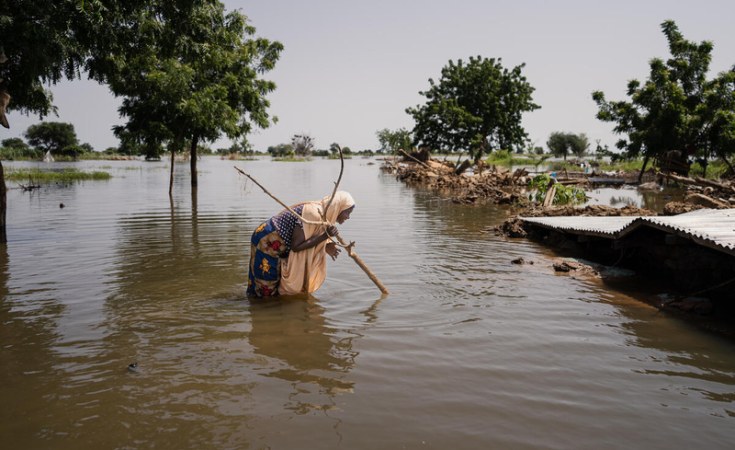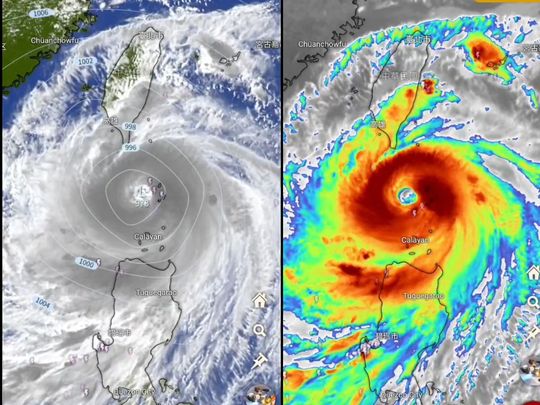A river is pushing up Mount Everest’s peak
Mount Everest is about 15 to 50 metres taller than it would otherwise be because of uplift caused by a nearby eroding river gorge, and continues to grow because of it, finds a new study by UCL researchers.
University College London
Mount Everest is about 15 to 50 metres taller than it would otherwise be because of uplift caused by a nearby eroding river gorge, and continues to grow because of it, finds a new study by UCL researchers.
The study, published in Nature Geoscience, found that erosion from a river network about 75 kilometres from Mount Everest is carving away a substantial gorge. The loss of this landmass is causing the mountain to spring upwards by as much as 2 millimetres a year and has already increased its height by between 15 and 50 metres over the past 89,000 years.
At 8,849 metres high, Mount Everest, also known as Chomolungma in Tibetan or Sagarmāthā in Nepali, is the tallest mountain on Earth, and rises about 250 metres above the next tallest peak in the Himalayas. Everest is considered anomalously high for the mountain range, as the next three tallest peaks – K2, Kangchenjunga and Lhotse – all only differ by about 120 metres from each other.
A significant portion of this anomaly can be explained by an uplifting force caused by pressure from below Earth’s crust after a nearby river eroded away a sizeable amount of rocks and soils. It’s an effect called isostatic rebound, where a section of the Earth’s crust that loses mass flexes and “floats” upwards because the intense pressure of the liquid mantle below is greater than the downward force of gravity after the loss of mass. It’s a gradual process, usually only a few millimetres a year, but over geological timeframes can make a significant difference to the Earth's surface.
The researchers found that because of this process Mount Everest grew by about 15 to 50 metres over the last 89,000 years, since the nearby Arun river merged with the adjacent Kosi river network.
Co-author, PhD student Adam Smith (UCL Earth Sciences) said: “Mount Everest is a remarkable mountain of myth and legend and it’s still growing. Our research shows that as the nearby river system cuts deeper, the loss of material is causing the mountain to spring further upwards.”
Today, the Arun river runs to the east of Mount Everest and merges downstream with the larger Kosi river system. Over millennia, the Arun has carved out a substantial gorge along its banks, washing away billions of tonnes of earth and sediment.
Co-author Dr Jin-Gen Dai of the China University of Geosciences, said: "An interesting river system exists in the Everest region. The upstream Arun river flows east at high altitude with a flat valley. It then abruptly turns south as the Kosi river, dropping in elevation and becoming steeper. This unique topography, indicative of an unsteady state, likely relates to Everest's extreme height."
The uplift is not limited to Mount Everest, and affects neighbouring peaks including Lhotse and Makalu, the world’s fourth and fifth highest peaks respectively. The isostatic rebound boosts the heights of these peaks by a similar amount as it does Everest, though Makalu, located closest to the Arun river, would experience a slightly higher rate of uplift.
Co-author Dr Matthew Fox (UCL Earth Sciences) said: “Mount Everest and its neighbouring peaks are growing because the isostatic rebound is raising them up faster than erosion is wearing them down. We can see them growing by about two millimetres a year using GPS instruments and now we have a better understanding of what’s driving it.”
By looking at the erosion rates of the Arun, the Kosi and other rivers in the region, the researchers were able to determine that about 89,000 years ago the Arun river joined and merged with the Kosi river network, a process called drainage piracy. In doing so, more water was funnelled through the Kosi river, increasing its erosive power and taking more of the landscape’s soils and sediments with it. With more of the land washed away, it triggered an increased rate of uplift, pushing the mountains’ peaks higher and higher.
Lead author Dr Xu Han of China University of Geosciences, who carried out the work while on a China Scholarship Council research visit to UCL, said: “The changing height of Mount Everest really highlights the dynamic nature of the Earth’s surface. The interaction between the erosion of the Arun river and the upward pressure of the Earth’s mantle gives Mount Everest a boost, pushing it up higher than it would otherwise be.”
Notes to Editors
For more information or to speak to the researchers involved, please contact Michael Lucibella, UCL Media Relations. T: +44 (0)75 3941 0389, E: m.lucibella@ucl.ac.uk
Xu Han, Jin-Gen Dai, Adam G. G. Smith, Shi-Ying Xu, Bo-Rong Liu, Cheng-Shan Wang, Matthew Fox, ‘Recent uplift of Chomolungma enhanced by river drainage piracy’ will be published in Nature Geoscience on Monday 30 September 2024, 16:00 UK time, 11:00 US Eastern time and is under a strict embargo until this time.
The DOI for this paper will be 10.1038/s41561-024-01535-w.
After publication, the paper will be available at the following URL: https://www.nature.com/articles/s41561-024-01535-w
Additional material
- Adam Smith’s academic profile
- Dr Matthew Fox’s academic profile
- UCL Department of Earth Sciences
- UCL Faculty of Mathematical & Physical Sciences
- China University of Geosciences (Beijing)
About UCL – London’s Global University
UCL is a diverse global community of world-class academics, students, industry links, external partners, and alumni. Our powerful collective of individuals and institutions work together to explore new possibilities.
Since 1826, we have championed independent thought by attracting and nurturing the world's best minds. Our community of more than 50,000 students from 150 countries and over 16,000 staff pursues academic excellence, breaks boundaries and makes a positive impact on real world problems.
The Times and Sunday Times University of the Year 2024, we are consistently ranked among the top 10 universities in the world and are one of only a handful of institutions rated as having the strongest academic reputation and the broadest research impact.
We have a progressive and integrated approach to our teaching and research – championing innovation, creativity and cross-disciplinary working. We teach our students how to think, not what to think, and see them as partners, collaborators and contributors.
For almost 200 years, we are proud to have opened higher education to students from a wide range of backgrounds and to change the way we create and share knowledge.
We were the first in England to welcome women to university education and that courageous attitude and disruptive spirit is still alive today. We are UCL.
www.ucl.ac.uk | Follow @uclnews on X (formerly Twitter) | Read news at www.ucl.ac.uk/news/ | Listen to UCL podcasts on SoundCloud | View images on Flickr | Find out what’s on at UCL Mind
Journal
Nature Geoscience
Method of Research
Imaging analysis
Article Title
Recent uplift of Chomolungma enhanced by river drainage piracy
Article Publication Date
30-Sep-2024










